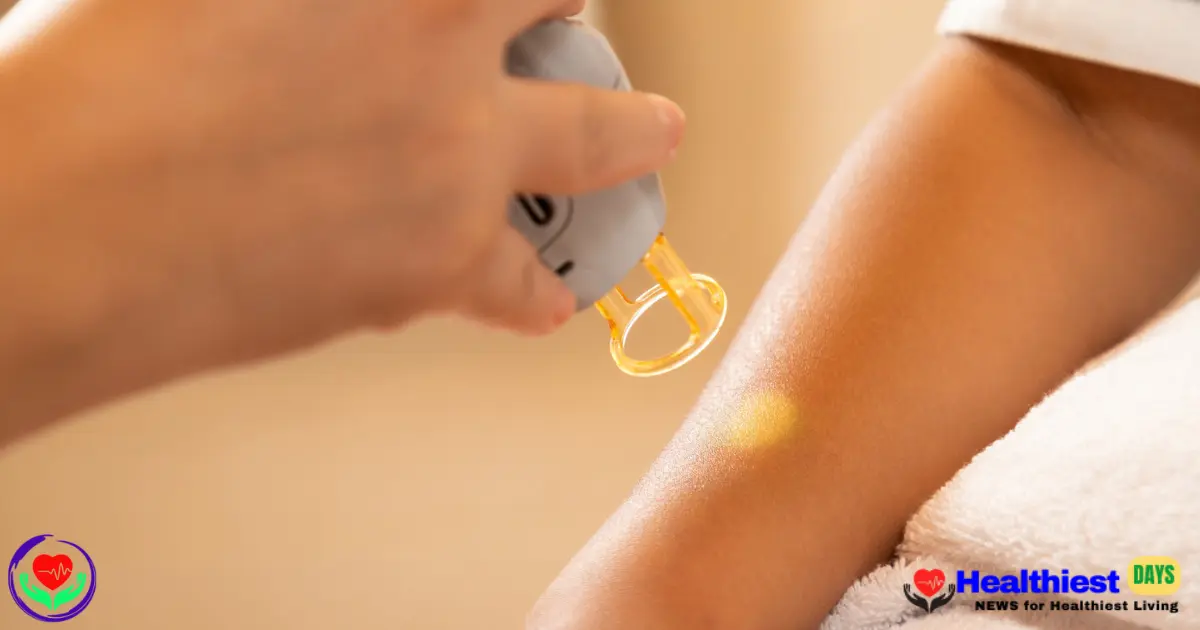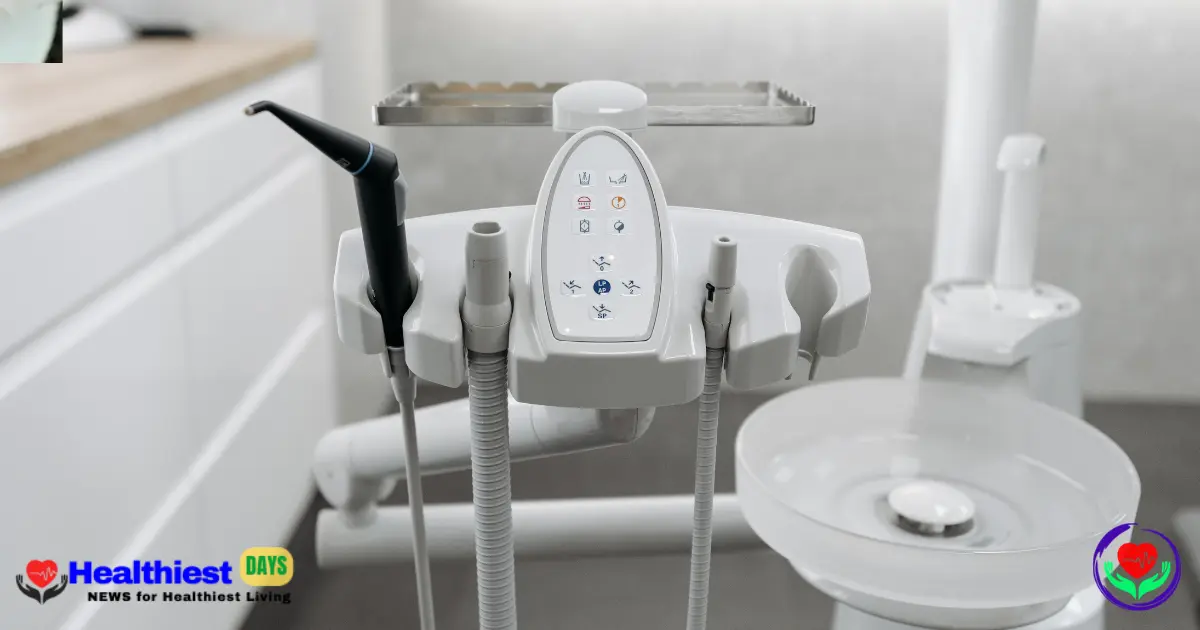Laser Aftercare: What to Do After Hyperpigmentation Treatment [Expert Checklist in 2025]
![Laser Aftercare 101: What to Do After Hyperpigmentation Treatment [Expert Checklist in 2025]](https://healthiestdays.com/wp-content/uploads/2025/07/Laser-Aftercare-Hyperpigmentation.webp)
Introduction Laser Aftercare Hyperpigmentation:
Are you thinking of undergoing the ideal laser treatment for hyperpigmentation, it is a smart move toward clearer skin. It is thought that what you do afterwards can make or break your results of skin in an orderly way. The wrong selection in skincare includes sun exposure or daily routines that can undo weeks of progress in the way to achieve laser aftercare.
If you are dealing with melasma covering sunspots, PIH, or uneven tone, then proper aftercare is your best defense against rebound pigmentation and skin damage.
It is a kind of guide that gives you the complete post-laser roadway from day one of healing to maintenance months later. As a result, you can clearly maximize your investment, can protect your complexion, and they have a chance to enjoy lasting radiance.
Why Aftercare Matters More Than the Laser Itself:
Lasers break down melanin skin at a significant level, yet they also cause mild trauma to your skin. Without proper care, it covers the following points:
- Pigment rebound: It can occur, reversing results
- Inflammation can slow healing and trigger PIH
- Sun exposure can darken treated areas within hours
When it is required to achieve smooth, even-toned skin with laser treatments, many people think that the laser is the most important part. But in reality, the thing that matters even more is what you do after the treatment, i.e., laser aftercare.
In 2025, dermatologists across the U.S. are practically emphasizing laser aftercare skin treatment. Especially for people having medium to dark skin tones. The reason is that laser treatments are very updated methods with effective results while leaving the skin vulnerable and sensitive. Without the right care, you are more likely to face laser treatment side effects such as dark spots, redness, or scarring.

For those people who have melanin rich skin, they are at risk of post-inflammatory hyperpigmentation (PIH) even at higher rates. This happens when your skin reacts to the heat and injury from the laser, triggering dark patches or uneven skin tone.
In fact, that is the reason why laser aftercare for dark skin is not just a suggestion; it is a must. If skin is not supported properly, then even the safest laser can lead to problems.
Furthermore, the question is, what should you do after laser treatment to protect your skin and get the best results? First of all, it is to follow a consistent routine. For this purpose, it is strongly recommended medically to use gentle, fragrance-free cleansers to avoid irritation. Apply healing creams or cooling gels, which soothe your skin.
Keep in mind that moisturizers have higher tendencies daily with barrier-supporting ingredients like ceramides or hyaluronic acid, and you should never skip broad-spectrum SPF 50 sunscreen even if you are indoors.
Also, it is suggested to avoid hot showers, saunas, makeup, sweating, and direct sunlight for at least one week. And resist the urge to exfoliate or use retinoids until your laser care hyperpigmentation advisor says it is safe.
It is worth noting that, according to recent data taken from U.S. dermatology clinics, over 70% of negative reactions after laser therapy are linked to poor laser aftercare. When you are supporting and taking care of your skin properly, then it means you are reducing the risk of scarring and preventing hyperpigmentation after laser treatment.
To en-cap it all, it is a team effort to make your hyperpigmentation laser treatment successful: the laser starts the process of transformation, but it is your aftercare routine that seals the deal.
At The HealthiestDays, we always try to remind our community that natural and healthy skin does not end at the clinic. It begins with the way you care for it at home.
The fact is, a 2024 EMJ Dermatology study found that the clients who skipped aftercare experienced 4 times more rebound pigmentation than those who followed a simple 2-week protocol. That is why today’s world of skincare is as focused on what to follow up with as on what laser you used.
Day 0 to 3: Immediate Laser Aftercare
The goals are:
- Cool down inflammation
- Prevent bacteria entry
- Shield from UV
| Action | Why It Matters | What to Use |
| Cool compresses | Reduces swelling and redness | Chamomile tea cloth or gel packs |
| Gentle cleanser (OFF) | Avoids irritation | Micellar water or baby-wash alternative |
| No makeup, no steam baths | Prevents infection or overheating | Skip any sauna/gym/pool visits |
| Daily SPF 50+ (every 3 hrs) | Shields sensitive skin from UV-triggered pigment | Mineral-based product: zinc/titanium |
- Continue mild cold compression every few hours
- Avoid touching treated areas
Week 1 to 2: Building the Moisture Barrier
Your skin is still healing, and it always is, so you need to keep it hydrated and protected.
- Morning: Rinse with tepid water → apply healing balm (like Aquaphor) → SPF 50+
- Evening: Wash with fragrance-free cleanser → apply barrier cream (CeraVe, La Roche-Posay)
- Daily: Drink water, avoid sweating
- Product Rule: No exfoliants, acids, or retinols
Most Important: Avoid direct sunlight and try to stay indoors during peak hours or wear UV-protective clothing.
Week 3 to 4: Introducing Active Compounds
Your skin strengthens itself; it is time to help with tone and texture.
- Vitamin C 10–15% (AM): Brightening antioxidant with SPF synergy
- Niacinamide 5% (PM): Soothes inflammation and strengthens skin barrier
- Consider gentle hydrating oils: (rosehip or squalane) if dryness persists
Avoid using glycolic acid, retinol, or abrasive agents yet.
Month 2 to 3+: Transition to Maintenance
Keep in mind that long-term care ensures lasting results:
- Continue daily SPF 50+
- Use broad-spectrum moisturizer and brightening serums
- Introduce AHA peels or gentle exfoliation (once weekly) only with professional approval
- Observe for milestone check-ins (4–6 weeks after each session)
Pro Tip: Create a journal of skin tracking in order to monitor pigment improvement and to identify triggers like heat, stress, or hormonal changes.
Best-Case vs. Worst-Case Scenarios:

Best Case:
- Even tone, minimal redness by week 2
- Faster healing time
- Consistent SPF prevents relapse
Worst Case:
- Redness and peeling persist ⇒ Improper aftercare or overheating
- Pigment rebound ⇒ Skip in Year 1 follow-up
- Infection risk from makeup or unclean tools
FAQs:
Q: Can you work out after laser treatment?
You should wait at least 48 hours before light activity. Increased sweat/heat may irritate skin. You can start strenuous exercise after day 3 if skin is calm.
Q: Is it safe to wear makeup after laser?
You can start only after day 3 to 5 and once redness has subsided. It is recommended to use mineral cushion foundation to prevent pore blockage.
Q: When can I exfoliate after laser treatment?
Not until week 4, and only use gentle AHA 5–10% (e.g., Mandelic acid) under professional supervision.
Q: Do I need to moisturize after laser?
Yes, of course. Hydration is key to fast recovery. You should choose barrier-repair creams and abstain from heavy oils that clog pores.
Q: Can I expose laser-treated skin to the sun?
No, not at all. UV exposure is the leading cause of post-laser pigment rebound. You have to wear SPF 50+ and sun-protective clothing.
Finally, Your Post Laser Skincare Spell:
Hyperpigmentation lasers work, but the secret ingredient to achieving long-lasting results is aftercare, especially for darker skin. You are supposed to follow the timeline diligently, avoid triggers, and keep protective routines.
If you ever wonder and feel yourself in trouble about what to apply or which step to skip, then refer to this guide or consult with your board-certified professional dermatologist. The best glow-up plan is healing smarter.
Sources & Credibility:
- American Academy of Dermatology: Pos Laser Care Guidelines
- Dr. Seema Malik, NYC: Board Certified Dermatologist, New York City
- DovePress Research: “Melanin Reaction to Laser Heat”
- Clinical articles reviewed on PubMed.gov
- National Institute of Health (NIH): Laser treatment of pigmentation disorders



